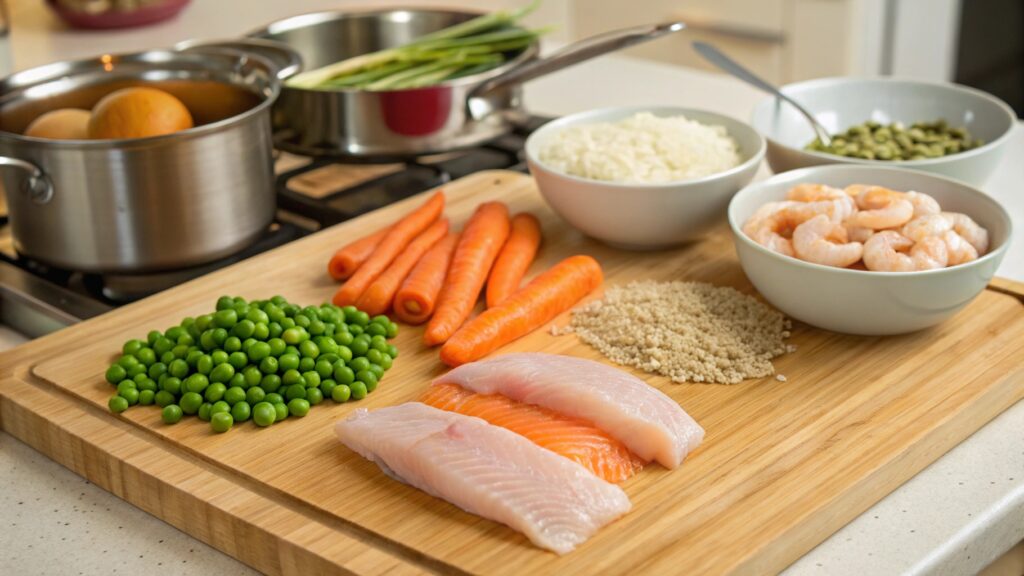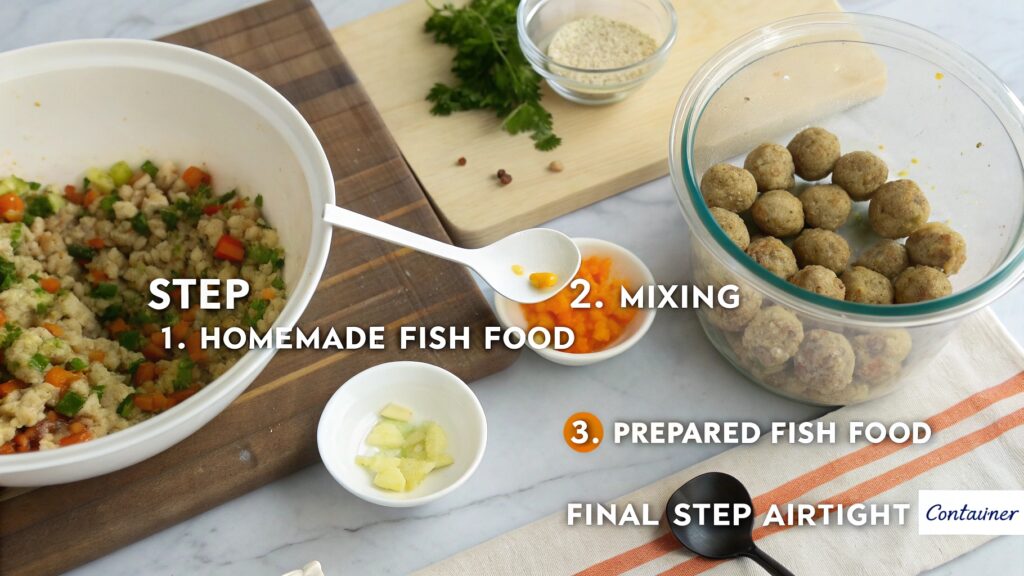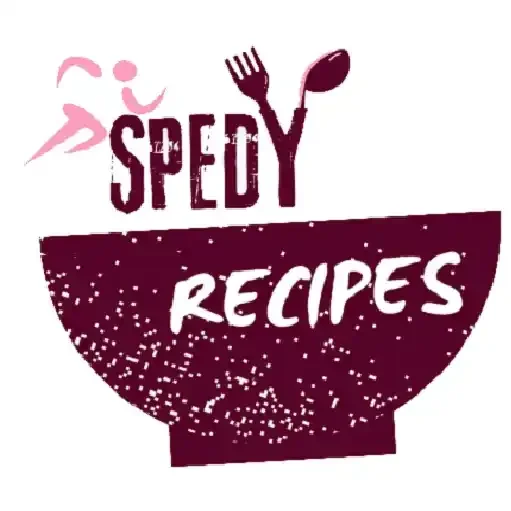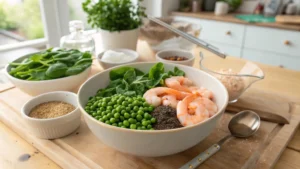Table of Contents
Ever wondered what exactly goes into your fish’s food? Whether you keep tropical fish, carnivorous species, or herbivores, their diet plays a crucial role in their health, growth, and vibrancy. While commercial fish food is widely available, many fish owners are turning to homemade fish food recipes as a healthier, cost-effective alternative.
Making your own fish food allows you to control the ingredients, ensuring a balanced and nutritious diet tailored to your fish’s specific needs. Plus, DIY fish food can be free from artificial additives and preservatives found in many store-bought options.
In this guide, we’ll explore:
✅ Why making your own fish food is beneficial
✅ The essential ingredients for a balanced fish diet
✅ Step-by-step fish food recipes for different species
✅ How to properly prepare, store, and feed homemade fish food
Why Make Your Own Fish Food?
Fishkeeping isn’t just about maintaining a clean tank; it’s also about providing the right nutrition. While store-bought food is convenient, homemade alternatives offer several benefits that can enhance your fish’s health and longevity.
Benefits of Homemade Fish Food
🐟 Healthier Ingredients – Many commercial fish foods contain fillers, artificial colors, and preservatives. By preparing your own fish food recipe, you ensure your fish get only natural, nutrient-rich ingredients.
💰 Cost-Effective – Buying raw ingredients in bulk and making fish food at home can be cheaper than repeatedly purchasing high-quality commercial brands.
🌱 Tailored Nutrition – Different fish species have unique dietary needs. Herbivores need more plant-based ingredients like spirulina and nori, while carnivorous fish thrive on protein-rich meals like krill and shrimp.
🚫 Avoids Harmful Additives – Many store-bought fish foods contain excessive phosphates and artificial preservatives that can contribute to poor fish health and even algae growth in tanks.
How DIY Fish Food Compares to Store-Bought Options
While commercial fish food is designed to meet general nutritional requirements, it often lacks variety and freshness. DIY fish food, on the other hand, allows for:
✔ Fresher ingredients – No processed or dried-out nutrients.
✔ Better digestibility – Avoiding fillers like wheat and soy that some fish struggle to digest.
✔ Customization – You can create the perfect blend based on whether your fish are herbivores, carnivores, or omnivores.
That said, homemade fish food requires proper preparation and storage to avoid spoilage or nutrient loss—something we’ll cover later in this guide.
Common Misconceptions About Homemade Fish Food
❌ “It’s too complicated!” – Nope! Many recipes are as simple as blending a few ingredients and freezing them into bite-sized portions.
❌ “It won’t provide enough nutrients.” – As long as you include a balanced mix of proteins, vitamins, and fiber, homemade fish food can be just as nutritious—if not more—than commercial options.
❌ “It will make my tank dirty.” – Overfeeding or using improper ingredients can cause waste buildup, but properly prepared DIY fish food won’t cloud the water.
Essential Ingredients for a Balanced Fish Food Recipe

When creating a fish food recipe, selecting the right ingredients is crucial. Just like humans, fish need a balanced diet to thrive. The key is to include a mix of protein, fiber, vitamins, and minerals to support their health.
Animal-Based Ingredients: Shrimp, Krill, and More
Fish need high-quality proteins to maintain their energy levels and build muscle. Some of the best protein sources include:
- Shrimp – Packed with omega-3 fatty acids and essential amino acids.
- Krill – A nutrient-dense option that enhances color and growth.
- Bloodworms – A favorite among many freshwater fish, rich in protein.
- Fish fillets – White fish like tilapia or cod provide lean protein without excessive fat.
For carnivorous fish, protein should make up at least 40–50% of their diet. Omnivores require a slightly lower percentage, while herbivores rely more on plant-based nutrients.
Vegetable-Based Ingredients: Spirulina, Nori, and Peas
Vegetables provide essential vitamins, fiber, and antioxidants. Some great options include:
- Spirulina – A superfood algae rich in protein and color-enhancing carotenoids.
- Nori (seaweed) – High in iodine, great for saltwater species.
- Peas and spinach – Help with digestion and prevent bloating in herbivorous fish.
- Carrots and bell peppers – Provide beta-carotene for vibrant fish coloration.
Herbivorous fish like plecos and goldfish thrive on plant-based nutrients, while omnivores benefit from a mix of vegetables and protein.
Binding Agents: Gelatin and Agar-Agar
To hold the ingredients together, you’ll need a binding agent:
- Gelatin – A common binder that keeps homemade fish food in a solid form.
- Agar-Agar – A vegetarian alternative, perfect for gel-based fish food.
These ingredients prevent crumbling and ensure your fish can consume food without excess waste polluting the tank.
Additional Nutrients: Vitamins, Garlic, and Probiotics
To make your DIY fish food even healthier, consider adding:
- Fish vitamins – Boosts immunity and fills in dietary gaps.
- Garlic – Improves appetite and enhances disease resistance.
- Probiotics – Aids digestion and promotes gut health.
Simple DIY Fish Food Recipes for Different Fish Types
Creating homemade fish food isn’t as complicated as it sounds. Below are customized fish food recipes for different types of fish, ensuring they get the proper nutrients.
Gel-Based Fish Food for Tropical Fish
This easy-to-make recipe is perfect for betta fish, guppies, and tetras.
📝 Ingredients:
- ½ cup shrimp (cooked or raw)
- ¼ cup peas (blanched)
- ¼ cup carrots (grated)
- ½ tsp spirulina powder
- 1 tbsp unflavored gelatin
- 1 cup water
Instructions:
- Blend shrimp, peas, and carrots into a fine paste.
- Dissolve gelatin in warm water and mix with the blended ingredients.
- Pour the mixture into a tray and refrigerate until firm.
- Cut into small cubes and freeze for future use.
This nutrient-packed recipe provides a balance of protein, fiber, and essential vitamins.
Protein-Rich Recipe for Carnivorous Fish
Ideal for Oscars, Arowanas, and Cichlids, this recipe contains high protein levels to support muscle growth.
📝 Ingredients:
- ½ cup fish fillet (tilapia or cod)
- ¼ cup krill or shrimp
- 1 tbsp fish vitamins
- ½ tsp garlic powder
- 1 tbsp gelatin (for binding)
Instructions:
- Blend the fish fillet and krill into a thick paste.
- Mix in fish vitamins and garlic powder.
- Heat the gelatin with water and combine it with the mixture.
- Form small portions and freeze.
This high-protein fish food recipe helps enhance fish size, energy, and natural color.
Vegetarian DIY Fish Food for Herbivores
For goldfish, plecos, and mollies, a vegetable-based diet is essential.
📝 Ingredients:
- ½ cup spinach (blanched)
- ¼ cup peas
- ¼ cup zucchini
- 1 tbsp spirulina powder
- 1 tbsp agar-agar (binding agent)
Instructions:
- Blend spinach, peas, and zucchini until smooth.
- Dissolve agar-agar in warm water and mix with the vegetable paste.
- Let it cool, then slice into portions for easy feeding.
This high-fiber fish food helps with digestion and overall vitality.
Frozen Fish Food Recipe for Saltwater Fish
Saltwater fish like clownfish, tangs, and angelfish thrive on a varied diet.
📝 Ingredients:
- ½ cup mixed seafood (shrimp, squid, mussels)
- ¼ cup spirulina powder
- ½ tsp fish vitamins
- 1 tbsp nori (chopped)
Instructions:
- Blend all ingredients until smooth.
- Pour into an ice cube tray and freeze.
- Pop out a cube when ready to feed.
This high-nutrient mix ensures strong immune systems and vibrant colors.
Flake and Pellet Alternatives for General Use
If you prefer dry food, try making homemade fish flakes:
📝 Ingredients:
- ½ cup white fish fillet
- ¼ cup spirulina
- ¼ cup carrots
- 1 tbsp fish oil
Instructions:
- Blend all ingredients into a thick paste.
- Spread onto a baking sheet and bake at low heat (150°F) until dry.
- Crumble into small flakes and store in an airtight container.
Step-by-Step Guide: How to Make Your Own Fish Feed

Making your own fish food recipe is easier than you might think! With just a few ingredients and simple steps, you can create nutrient-rich meals for your fish. Let’s break it down step by step.
Tools and Equipment Needed
Before diving into the process, gather these basic kitchen tools:
✅ Blender or food processor – For finely chopping ingredients.
✅ Mixing bowls – To combine and mix your fish food ingredients.
✅ Measuring cups and spoons – For accurate ingredient portions.
✅ Ice cube trays or silicone molds – To shape and store frozen food.
✅ Baking sheet and oven – If making flake or dried food.
Preparation and Mixing Process
Now, let’s get to the fun part—preparing your homemade fish food!
1️⃣ Select the right ingredients – Choose a mix of proteins, vegetables, vitamins, and a binding agent (like gelatin or agar-agar).
2️⃣ Blend everything together – Use a blender to create a smooth, uniform paste.
3️⃣ Adjust the consistency – If it’s too thick, add a little water; if too thin, use more solid ingredients.
4️⃣ Customize for your fish – Need higher protein? Add krill or shrimp. Want more fiber? Mix in spinach or peas.
At this stage, your homemade fish feed should be well-mixed and nutrient-packed!
Freezing and Storing Your Homemade Fish Food
Proper storage is key to keeping your fish food fresh. Here’s how to do it right:
🧊 For gel-based or frozen food: Pour the mixture into an ice cube tray and freeze. Once frozen, transfer cubes into an airtight bag and store in the freezer.
🌿 For dried flakes: Spread the paste thinly on a baking sheet and bake at low heat (150°F) for 2–3 hours. Once dried, crush into flakes and store in a dry, airtight container.
Frozen fish food can last several months, while dried flakes stay fresh for weeks if stored properly.
Best Feeding Practices for DIY Fish Food
🐟 Feed small amounts – Only give your fish what they can eat in 2–3 minutes to prevent overfeeding.
🛑 Monitor their response – If they hesitate, tweak the recipe next time.
💦 Keep the tank clean – Remove uneaten food to avoid water pollution.
Common Mistakes to Avoid When Making Fish Food
Even with the best intentions, mistakes can happen when making homemade fish food. Let’s look at some common pitfalls and how to avoid them.
Using the Wrong Ingredients
🚫 Avoid harmful foods – Not all human foods are safe for fish. Stay away from:
- Onions and garlic in excess – Can be toxic in large amounts.
- Dairy products – Hard for fish to digest.
- Highly processed foods – Contain preservatives and additives.
Stick to fresh, natural ingredients to ensure healthy, balanced meals.
Not Balancing Nutrition Properly
A good fish food recipe needs the right nutrient mix:
❌ Too much protein? It can cause digestive issues in herbivorous fish.
❌ Too many vegetables? Carnivores won’t get the protein they need.
❌ Not enough essential fats? Your fish may lack energy and vibrancy.
Solution? Customize your recipe based on whether your fish are herbivores, carnivores, or omnivores!
Overfeeding or Underfeeding Your Fish
🚫 Too much food? It pollutes the tank and leads to obesity.
🚫 Too little food? Your fish may suffer from malnutrition.
✅ Rule of thumb: Feed your fish only what they can eat in 2–3 minutes, twice a day.
FAQs About Homemade Fish Food
Many fish owners have questions when it comes to making their own fish food recipe. Below, we answer some of the most common concerns.
What is the best homemade food for fish?
The best homemade fish food depends on your fish species. Carnivorous fish need a high-protein diet, so ingredients like shrimp, krill, and fish fillets work best. Herbivores, on the other hand, thrive on spirulina, peas, and nori. For omnivorous fish, a mix of protein and vegetables ensures balanced nutrition.
If you’re unsure, try a gel-based fish food recipe—it’s easy to prepare and works for most species!
How to make your own fish feed?
Making your own fish feed is simple:
1️⃣ Choose high-quality ingredients based on your fish’s dietary needs.
2️⃣ Blend everything into a smooth paste for easy digestion.
3️⃣ Use a binding agent (like gelatin or agar-agar) to keep it together.
4️⃣ Freeze or dry the food to store it for later use.
By following these steps, you can create a nutritious and cost-effective alternative to store-bought fish food.
What are the ingredients in fish food?
Most fish food recipes contain:
- Proteins – Shrimp, krill, fish fillets, or insects.
- Vegetables – Peas, spinach, carrots, or seaweed.
- Healthy fats – Fish oil or omega-3 supplements.
- Vitamins & minerals – Spirulina, garlic, or fish vitamins.
By combining these elements, you ensure that your fish get all the nutrients they need!
What are the main 3 ingredients in commercial fish feed?
Commercial fish food often contains:
1️⃣ Fish meal – A protein-rich base made from processed fish.
2️⃣ Wheat or soy – Used as a filler and binder.
3️⃣ Added vitamins & minerals – To support fish health.
Unlike homemade fish food, many store-bought options contain preservatives and artificial additives. That’s why making your own DIY fish food is a healthier, natural alternative.
Final Thoughts: Is Homemade Fish Food Right for You?
Making your own fish food recipe is a rewarding experience that allows you to control what your fish eat. Not only does it ensure fresh, high-quality nutrition, but it also saves money in the long run.
Why You Should Try DIY Fish Food
✅ Healthier for your fish – No artificial preservatives or fillers.
✅ Customizable nutrition – Tailor it to your fish’s needs.
✅ More cost-effective – Bulk ingredients save money over time.
However, homemade fish food does require some effort. You’ll need to prepare, store, and adjust recipes based on your fish’s preferences and dietary needs.
Final Tips for Success
🐟 Start with a simple recipe – Try a gel-based mix with proteins and vegetables.
🐟 Monitor your fish’s response – Adjust ingredients if needed.
🐟 Store food properly – Freeze or dry to prevent spoilage.
Fish Food for a Healthy Aquarium
Ingredients
- Proteins:
- 100 g shrimp peeled and deveined
- 100 g white fish fillet e.g., tilapia or cod
- 50 g krill or bloodworms
- Vegetables:
- 50 g peas boiled and shelled
- 50 g spinach leaves
- 25 g carrots chopped
- 25 g red bell pepper chopped
- Supplements:
- 1 clove garlic
- 1 teaspoon spirulina powder
- 1 sheet nori seaweed
- 1 packet unflavored gelatin
Instructions
- Prepare the Protein:
- Cook the shrimp and fish fillet by steaming or boiling until fully cooked.
- Allow them to cool slightly.
- Blend Ingredients:
- In a food processor, combine the cooked shrimp, fish, krill or bloodworms, boiled peas, spinach, carrots, red bell pepper, and garlic.
- Blend until you achieve a smooth, consistent paste.
- Add Supplements:
- Incorporate the spirulina powder and crumbled nori sheet into the mixture.
- Blend briefly to ensure even distribution.
- Prepare Gelatin Binder:
- Dissolve the unflavored gelatin in warm water according to the package instructions.
- Gradually add the dissolved gelatin to the blended mixture, stirring continuously to combine thoroughly.
- Set the Mixture:
- Pour the final mixture into ice cube trays or spread it evenly on a flat tray lined with parchment paper.
- Refrigerate for several hours until the mixture solidifies.
- Portion and Store:
- Once set, cut the solidified mixture into small, bite-sized pieces suitable for your fish.
- Place the portions into airtight containers or freezer bags.
- Store in the freezer to maintain freshness.
- Feeding Instructions:
- Feed your fish once or twice daily, offering only what they can consume within 2–3 minutes to prevent overfeeding and water contamination.
- Remove any uneaten food promptly to maintain water quality.
- Calories: Approximately 1–2 calories per cube (exact values may vary based on specific ingredient brands and quantities).
Notes
Storage: Frozen homemade fish food can be stored for up to 3 months. Thaw individual portions in the refrigerator before feeding.
Caution: Monitor your fish for any adverse reactions when introducing new food. Discontinue use if any health issues arise.
How to Adapt a Fish Food Recipe for Different Fish Species
Not all fish have the same dietary needs, so adjusting your fish food recipe ensures better health and longevity. Let’s break it down by fish type.
Carnivorous Fish: Protein-Packed Diets
Carnivorous fish, like Oscars, Bettas, and Arowanas, need high-protein foods. Their diet should consist of:
- Shrimp and krill – Provide essential amino acids for muscle growth.
- Fish fillets – Lean protein sources like tilapia or cod.
- Bloodworms and insects – Mimic their natural diet.
📌 Recipe Tip: Blend shrimp, krill, and fish fillets, then add gelatin for a nutrient-rich, protein-packed gel food.
Herbivorous Fish: Plant-Based Nutrition
Herbivores, like Plecos, Goldfish, and Mollies, need fiber-rich vegetables to aid digestion. Their diet should include:
- Spirulina and algae – Boost immunity and improve color.
- Peas and spinach – Prevent bloating and aid digestion.
- Zucchini and carrots – Provide vitamins and minerals.
📌 Recipe Tip: Create a veggie-based mix by blending boiled peas, carrots, and spirulina into a soft, chewable gel food.
Omnivorous Fish: A Balanced Mix
Omnivores, such as Guppies, Angelfish, and Tetras, require both proteins and vegetables. A mix of shrimp, peas, and spirulina works best.
📌 Recipe Tip: Combine equal parts protein and vegetables in your DIY fish food to maintain balance.
Sustainable and Eco-Friendly Fish Feeding Tips
Caring for your fish goes beyond feeding—it’s about maintaining a sustainable and eco-friendly approach to aquarium care.
Choosing Sustainable Ingredients
Many commercial fish foods use unsustainable fish meal or overfished species. Instead, consider:
- Locally sourced seafood – Choose ethically harvested shrimp or krill.
- Organic vegetables – Avoid pesticides by using organic spinach and peas.
- Insect-based proteins – Black soldier fly larvae or mealworms are great eco-friendly alternatives.
By making your own fish food recipe, you reduce reliance on overfished resources and ensure a cleaner diet for your fish.
Reducing Waste and Overfeeding
Overfeeding is a common issue that leads to poor water quality and fish health problems. To avoid waste:
- Feed only what fish can consume in 2–3 minutes.
- Use portion-controlled frozen cubes instead of dumping excess food.
- Monitor leftovers—uneaten food clouds water and raises ammonia levels.
Sustainable fish feeding not only saves money but also creates a healthier tank environment.
Reusing Kitchen Scraps for DIY Fish Food
Instead of throwing away vegetable scraps, repurpose them!
- Carrot peels, zucchini ends, and spinach stems can be blended into a nutritious fish food recipe.
- Leftover shrimp shells can be boiled and blended for an extra calcium boost.

